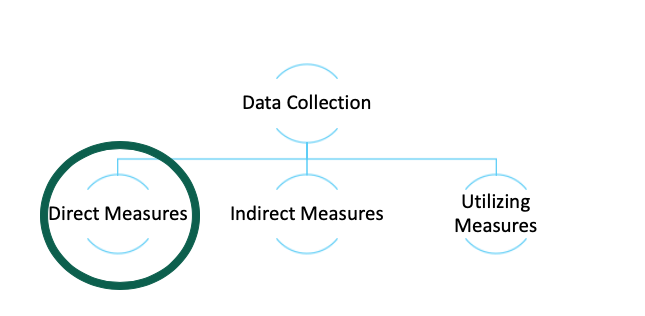
The most important form of data for assessment purposes are direct measures.
Direct measures evaluate student work product directly in relation to the Student Learning Outcome being assessed. This means the work product should align with the Student Learning Outcome and the means of evaluation for the work product should be reliable and valid.
Direct measures include (but are not limited to) test items, essays, portfolios, and problem sets. For subjective measures, such as essays and presentations, performance on these measures in relation to the Student Learning Outcome should involve reliable and valid rubrics in conjunction with pre-determined targets for success. For example, an essay that relates to a Student Learning Outcome should not be evaluated based on how many students earned "A's" on the essay, but rather based upon a rubric designed to measure how students are performing on a specific Student Learning Outcome.
| Ineffective Measures | Effective Measures |
| "Students will pass core course X with a C or better." | Utilizing a rubric designed to evaluate a particular portion of an assignment that relates directly to the Student Learning Outcome. |
| "Students will take courses X, Y and Z." | Designing a problem set of questions that measure student's knowledge and ability in relation to the Student Learning Outcome and measuring how students perform on those specific questions. |
